Some projects are intended to be portable or are designed to operate remotely. Given that, we need a power supply that is portable and can be left unattended for a period of time. One way to do that is by using battery power.
But what are the factors we need to consider? In this article, we will discuss the battery power requirements of your Arduino controlled devices to suit its intended portable and compact design.
When designing a battery-powered Arduino, always use the smallest Arduino possible. For example, an Arduino Nano draws less power than the Arduino UNO, and the Pro-Mini draws less than the Nano. Always start with the smallest Arduino that is capable of what you are planning to build. The Arduino also includes a library that creates a power save mode, but we will cover that in another article.
Sizing the Battery to Fit Your Needs
There are numerous ways to power an Arduino device but selecting the proper battery can make or break an otherwise good project. Many trade-offs are necessary to match a battery to a specific task. One of the first decisions to make would be to select between a primary or secondary battery.
Primary batteries are the most common type of battery and have been around for over one hundred years. These are non-rechargeable, common-sized, and dependable in nearly any environment. Available in standard sizes from AAA to D Cell, it delivers a steady 1.5 volts to power a device. A 9V battery is also considered a primary battery and is actually made up of small individual 1.5-volt cells. Primary batteries are well suited for portable devices that are not in remote locations and don’t require too much power.
On the other hand, secondary batteries come in many different configurations, and sizes. They are rechargeable, dependable, and usually more expensive than a primary battery. Depending on the specific battery, some require special handling and unique charging devices. If improperly used, they may catch fire or even explode.
The battery rating should give you an estimate of how long you can expect the circuit to run. For example, if your circuit draws 35mA continuously, a battery with a 3400mAh rating can be expected to last about 4 days.
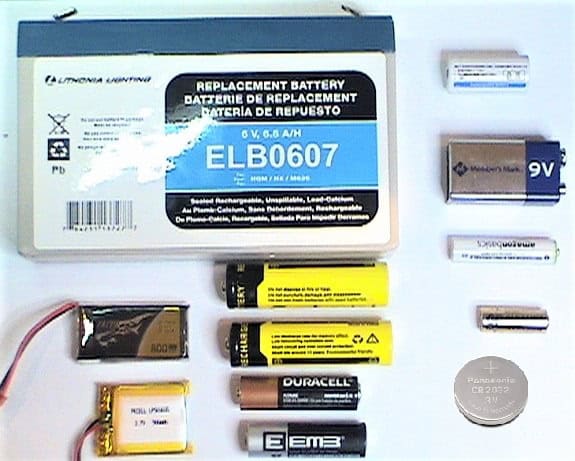
Primary Cells
Carbon zinc, alkaline batteries, 9V, and coin cell are types of primary batteries (non-rechargeable) that would most likely be utilized in an Arduino project. Each has different attributes that should be considered when deciding on the power source.
Carbon Zinc Batteries
Carbon zinc batteries have been around for over one hundred years. Each cell is capable of providing 1.5 volts. They are inexpensive, designed for light loads, and have a relatively long life. The carbon-zinc batteries have a long shelf life but are not intended for use in very low temperatures, and are not rechargeable.
You should never use this with any other type of primary cells. When carbon-zinc batteries are stacked to increase voltage, all cells must be of the same type. Double-A (AA) carbon-zinc batteries have a rating of 400-900 mAh. Today, they have been replaced by alkaline batteries but are included here for discussion purposes.
Alkaline Batteries
Alkaline batteries have a higher energy density (how much energy a battery holds), and longer shelf life than carbon-zinc batteries. Depending on the load applied, the rating ranges from 3000mAh at a low current rate to as low as 700mAh for a heavy load.
The output voltage of an alkaline battery drops as the battery is used, so its use is dependent on the load requirements. It can handle light loads easily but heavy loads (1A) reduces the useful life of the battery. Double-A (AA) alkaline batteries are capable of delivering approximately 700mA of current without overheating the battery. Alkaline batteries are a good choice for lightly loaded applications. As a plus, it allows you to change from an AA cell to a C cell, or even a D cell to increase capacity.
9V Batteries
The ubiquitous 9V battery falls into one of two categories, either Lithium or Alkaline. It’s a non-rechargeable battery made up of smaller cells stacked to create a 9-V source. A 9-V lithium battery rated at approximately 500mAh delivering 25ma has a life expectancy of a little more than 24 hours. When delivering 1A, it would last less than 8 hours. Alkaline batteries are capable of considerably less.
When connected to an Arduino, the 9V battery goes through a linear regulation to lower the voltage to an acceptable level. This alone would tax a typical 9V battery. It would do better with 3 AA batteries connected to the 5V input on the Arduino bypassing the regulator. But this is not to say that an Arduino cannot be modified and programmed to run successfully with a 9V battery. You can read more about that here.
Coin Cell Batteries
The coin cell battery is a lithium battery that cannot be recharged. It is considered a low power cell that can be stacked to increase its voltage. Typically, it is used in small remote control devices and key fobs, but due to its unique design, a special holder is required. Because of this, its use is somewhat limited to only very small Arduino circuits.
Secondary Cells
Secondary batteries are rechargeable and available in many different sizes and configurations. The secondary batteries that are most likely to be used with Arduino-based systems are Lithium-Ion, Lithium Polymer, Nickel Metal Hydride, and sealed lead-acid batteries.
Lithium Ion and Lithium Polymer Batteries
There are many variations of the lithium-ion chemistry. But we will focus on Lithium Polymer (LiPo) and Lithium Ion (Li-ion) types because they are the most popular:

Lithium Ion Batteries vs. Lithium Polymer Batteries
| Lithium Polymer | Lithium-Ion |
| Less power density | More power density |
| More expensive | Less expensive |
| Packaging: pouch flexible | Packaging: cylindrical, prismatic (box) |
| Safety: safer than Li-ion | Safety: can be unstable, poor charging techniques can cause problems |
| N/A | Includes circuitry to regulate power and discharge to prevent explosions |
| N/A | Aging can cause problems |
| Rechargeable | Rechargeable |
Both deliver 3.7 to 4.2 volts, which averages out to 3.7V.
When charging Lithium batteries, the charging voltage should be less than or equal to the battery voltage. Do not charge higher than the rated voltage of the cell. Built-in circuitry will prevent this from happening.
Know the current requirements of your device, and never draw more current from the battery than it can provide. This is also controlled by the circuitry built into the lithium-ion battery. Never attempt to charge at temperatures higher than 122 degrees Fahrenheit.
Charging lithium-ion and lithium polymer batteries require a charging unit specifically designed for them. The charger should not go above 4.2V. Most lithium-ion chargers allow you to use the device while charging it by supplying an “OUT” button to provide power to the load while charging the battery.
Always take note of the “C” rating of the battery (C= amp-hour rating/ 1 Hour). A battery rated at 1300mAh would be charged at a rate of 1300ma for 1 hour. Charging at a 0.5C would take 2 hours. Manufacturers post suggested ratings to charge their batteries.
Nickel Metal Hydride (NiMH) Batteries
Nickel Metal Hydride batteries are considered a replacement for Alkaline batteries. They provide 1.25V per cell and they are rechargeable but have self-discharge problems. In addition, it requires a long recharge cycle and weighs more than lithium-ion batteries. But they do not present the hazards lithium-ion does which some people find reassuring.
An easy comparison for NiMH batteries would be to think of them as rechargeable AAA, AA, C, and D batteries running at 1.2V. They provide only 1.2V per cell, while lithium-ion/polymer each provides 3.7V.
Lead Acid Batteries
We included lead-acid batteries for those special applications that require a large amount of power and are in remote locations. Apart from the fact that they are extremely bulky, they also require higher power charging circuitry.
DIY Power Bank
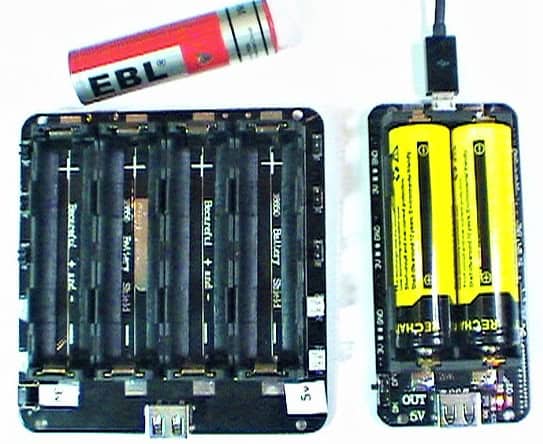
You can easily create your own power bank. The power bank on the right equipped with 2 lithium-ion 18850 cells is capable of delivering either 3.3V or 5V. The unit has an integrated charger that allows charging from a USB port on a PC.
Thanks for reading and be sure to leave a comment if you have questions about anything!



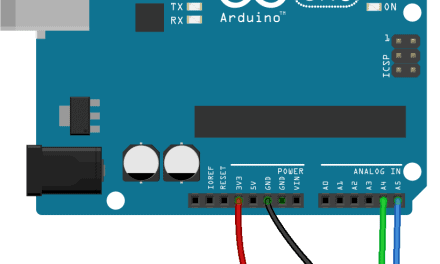
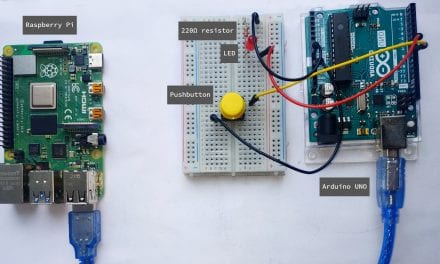
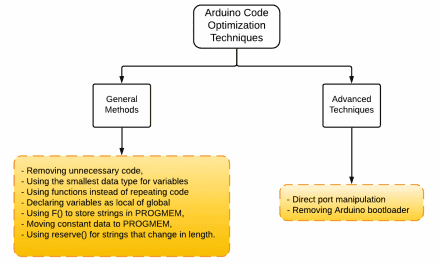
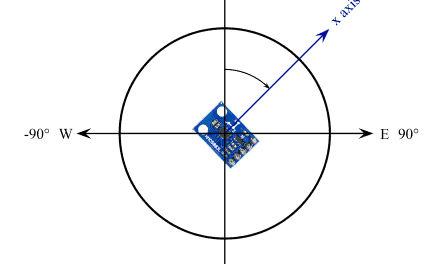



Any chance for a tutorial or link to make those DIY POWER BANKS? Thanks!